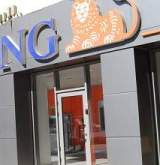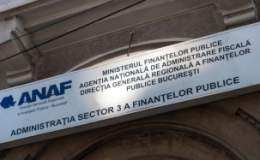Saving in Romania
Today, savings in bank deposits tend to broaden, especially in terms of currencies. Romanians usually choose to keep their money in euro or US dollars due to the sharp devaluation of the leu against the two currencies over the past years.
| 30.09.2009 | 30.09.2008 | 30.09.2007 | |
| Deposits in lei | 100.61bln lei | 95.4 bln lei | 75.2 bln lei |
| Deposits in Fx | 61.08 bln lei | 49.98 bln lei | 34.45 bln lei |
| TOTAL | 161.69 bln lei | 145.38 bln lei | 109.65 bln lei |
The migration from domestic to foreign currency was observed also by the senior economist of the National Bank of Romania, Valentin Lazea. This change will minimize bank’s capacity in giving loans in domestic currency, he said.
Performance of the currencies
Against Europe’s single currency, the leu fell sharply over the past two years, EUR/RON going up 16% from October 27, 2008, and 28% from October 26, 2007. Therefore, the winners of the currency’s devaluation were those who denominated their savings in euro.
| Exchange rates | Oct 27, 2009 | Oct 27, 2008 | Oct 26, 2007 |
| EUR/RON | 4.2897 | 3.6869 | 3.3508 |
| USD/RON | 2.8803 | 2.9607 | 2.3329 |
| GBP/RON | 4.7316 | 4.5509 | 4.7896 |
| CHF/RON | 2.8306 | 2.5526 | 2.0032 |
USD suffered marked fluctuations over the past two years. At that time, the dollar traded for 2.3329 and a year later the exchange rate reached 2.9607.
With a steady performance and narrow volatility are the Swiss francs, and GB pound. Today, a pound is sold for as much as 4.7316 lei, 4% more than a year ago, but 1.2% cheaper than two years ago. Swiss franc has been appreciating steadily against the local currency, by 10% over the past 12 months and by a whopping 41% over the past 24 months. Today, a Swiss franc is worth 2.8306 lei.
Tips from market analysts
“A mixture of savings in lei and euro is the best option at the moment, and the share of each currency depends on the savers’ tolerance to risk. A saver who is not willing to take any currency devaluation risk and wants to play safe, he will go with the euro. If he wants higher returns, he will go with the leu, as deposits in local currency returns higher yields”, Radu Craciun told Wall-Street.
“For a month, deposits in lei are a good option but for a 3 to 6-month time horizon, it would be better for savers to choose euro. For one to three years, the local currency remains top of the list, but for any time horizon longer than 3 years, foreign currency is the best option. Only that in Romania, term deposits with more than 5-year maturity don’t exist”, Dragos Cabat added.




























































![HR [PLAY] Tech Workout - 11...](https://www.wall-street.ro/image_thumbs/thumbs/973/973fe0a3888d417feff63de42e814180-260x260-00-65.jpg?v=1713571740)










